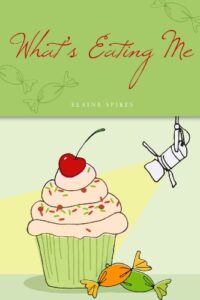In her second article Elaine Spires turns a novel into a stage play
In my previous article – Turning a Stage Play into a Novel – I shared my experiences of turning two of my plays into novels and of the relative ease with which this was done. Writing a play from a book (Singles’ Holiday) proved much harder.
Originally I wanted to write a screenplay but knew the probabilities of getting it in front of anyone that mattered were slightly less than winning the Euromillions next Friday. And although I know lots of actors, writers and directors, I unfortunately don’t know anyone with the financial means to make such a film or TV series. Producing Singles’ Holiday for the stage, however, was much more feasible.
The book has a fairly large cast of characters, and I wanted them all to appear in the play. This was impossible. As interesting as their backstories were and of importance in explaining how this totally diverse group of people come to holiday together in Antigua, it couldn’t be told in two hours. So the culling of characters began. It felt like I was murdering my own children.
To start, I took a red pen to all the minor characters. Then I concentrated on those remaining to move the story along and produce my first draft. I’ve always preferred writing dialogue, but writing only dialogue proved a challenge resulting in lengthy stage directions.
The draft was four hundred and two pages: totally unrealistic as it would mean a six-hour show. Actor Nick Campbell who knew the book well, had encouraged me to write the script and wanted to produce the play sat down with me and after much foot-stamping on my part persuaded me to cut two more characters but this meant we lost a huge plot twist.
I feared this would diminish the story but I could see that he was right; it was better to concentrate on writing a play that worked rather than a faithful rehash of the book that didn’t. There’s nothing worse than theatre that doesn’t entertain.
It turned out to be sound advice. I realised that Singles’ Holidays is, in fact, almost three books in one and by carefully plotting the story arc and concentrating on a smaller cast it could work well.
 Once the second draft was ready I got a group of actors together for a table read. This is a vital part of the playwriting process as it’s the first time a writer sees her characters come to life and hears them speak, outside her own head, of course. It also shows what works theatrically and what doesn’t. As this draft was over two hundred pages I already knew further editing would be necessary. I made copious notes and worked on the script again. Cutting out two further characters and their dialogue brought us to one hundred and sixty pages.
Once the second draft was ready I got a group of actors together for a table read. This is a vital part of the playwriting process as it’s the first time a writer sees her characters come to life and hears them speak, outside her own head, of course. It also shows what works theatrically and what doesn’t. As this draft was over two hundred pages I already knew further editing would be necessary. I made copious notes and worked on the script again. Cutting out two further characters and their dialogue brought us to one hundred and sixty pages.
And it was time for another table read. A fabulous director friend Jane Gull came along and was brutally honest with me, asking,
“Whose story is it, Elaine?”
This one question (answer – Eve the tour manager’s) showed me what I needed to do: cut out anything superfluous to developing her story.
Finally, I had a one-hundred-and-thirty-page play script. Another table reading showed it worked!
And in October 2014, Singles’ Holiday had a hugely successful week’s run at the Brentwood Theatre, courtesy of Melabeau Productions.
Singles’ Holiday is now the first in the six-book Singles’ Series. The others are set in worldwide tourism destinations and continue Eve’s story. I still think they would make great TV. Does anyone know someone at Netflix?
www.elainespires.co.uk


